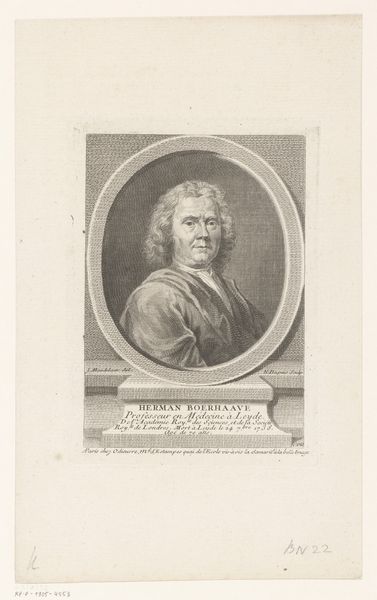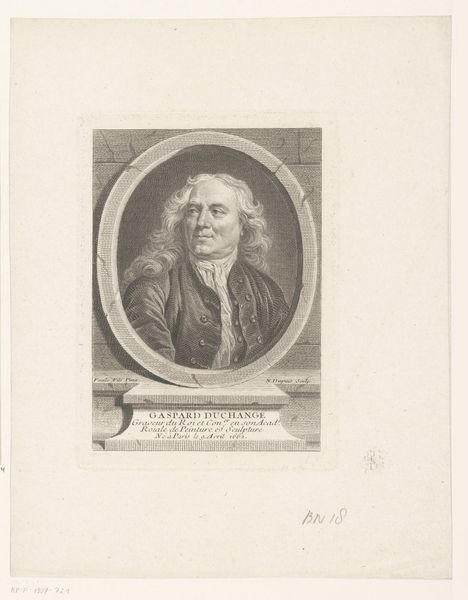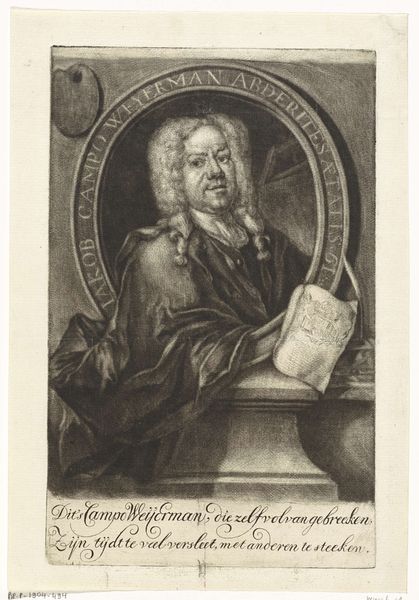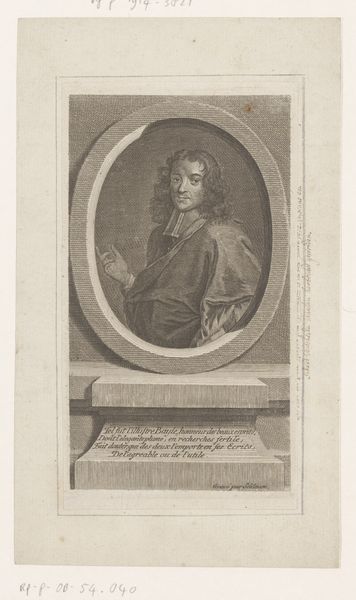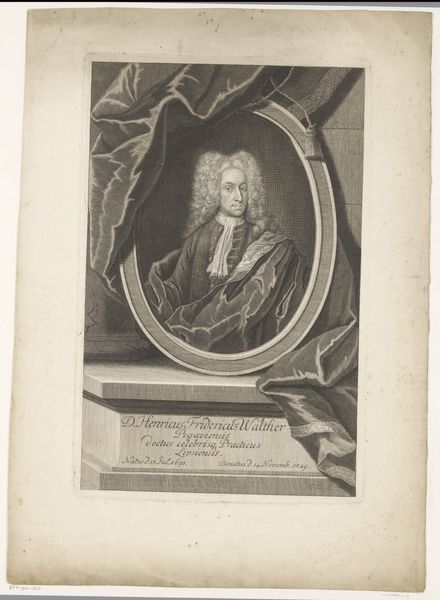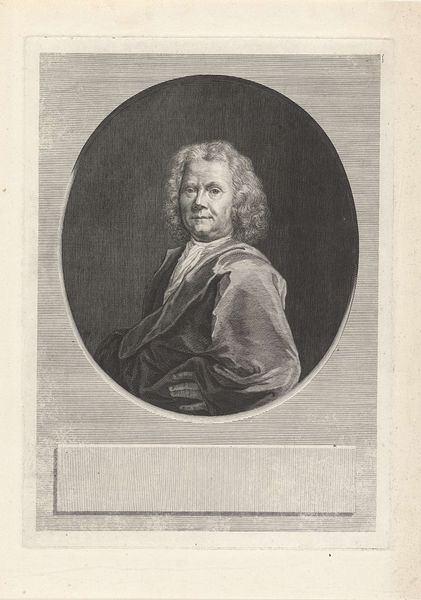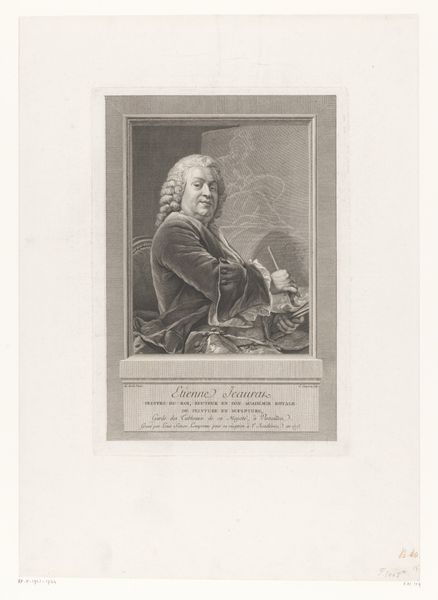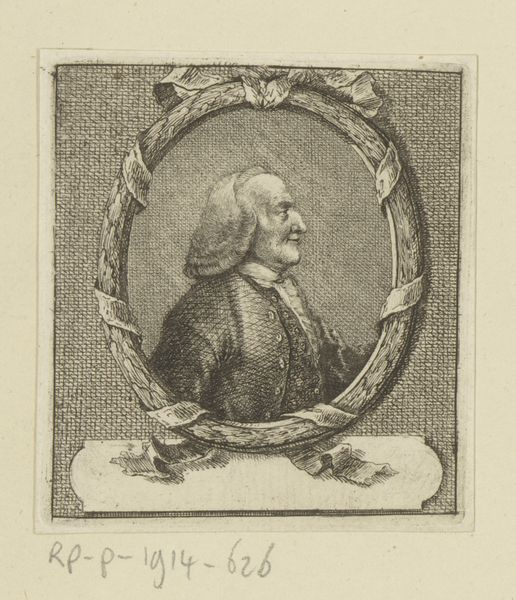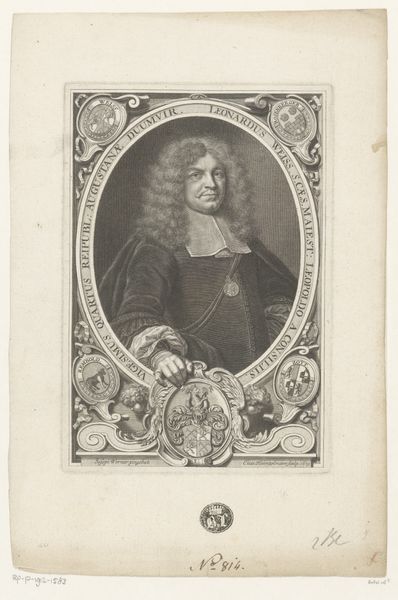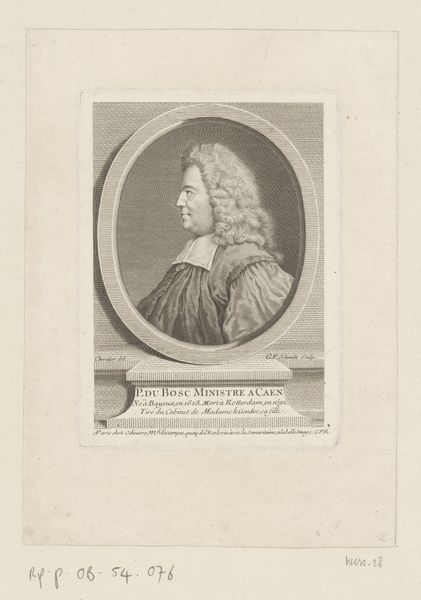
drawing, print, paper, engraving
#
portrait
#
drawing
#
self-portrait
#
baroque
# print
#
old engraving style
#
paper
#
engraving
Dimensions: height 159 mm, width 107 mm
Copyright: Rijks Museum: Open Domain
Curator: Here we have Jacob Houbraken’s "Portret van Karel de Moor," an engraving from 1751, housed here at the Rijksmuseum. Editor: It’s striking! The subject’s gaze is really intense and the amount of detail Houbraken achieves with just engraving is astounding. I’m immediately drawn to the contrast between the ornate oval frame and the tools of the trade. Curator: It's fascinating how Houbraken represents artistic identity here. De Moor is not merely depicted; he is presented within the context of his craft and societal standing. Note the subtle suggestion of his workspace beneath, and the small artworks scattered on the table at the lower right. The man is also shown to be holding his medal as the knight of the Holy Roman Empire Editor: Right, the materiality of the printmaking process is really apparent. The deliberate choice of engraving emphasizes the craft, the labour involved in producing an image intended for wider distribution, not only because this man, de Moor, made art; this print declares itself as art, too. Curator: Absolutely. Consider also how the inclusion of de Moor's tools – the palette and brushes – speaks to the tangible labor behind artistic creation, challenging the romanticized image of the artist as purely divinely inspired. Furthermore, how might the choice of printmaking as a medium impact the dissemination and perception of de Moor’s image, given the wider reach it afforded in the 18th century? How did that inform De Moor’s authority, if he had such intentions? Editor: And don't forget the role paper played. It's the silent carrier of this artistic identity. The cheap, readily available kind allowed this to be distributed more readily than oil paint. Curator: A crucial point! It underscores the accessibility of the image to a wider audience. Considering the engraving within the framework of Baroque portraiture, it's clear that Houbraken consciously situates de Moor within a lineage of celebrated figures. What does it convey to depict not a royal or nobleman, but an artist? Editor: Ultimately, Houbraken gives us not just a likeness, but also offers an understanding of art production in the 1700s by the skilled artisan's work in metal to mass-produce the art. Curator: Indeed, we have a carefully constructed presentation of artistic identity. It invites us to critically examine how the social, material, and representational dimensions intersect. Editor: Precisely. The tools of creation, immortalized in the copy by a very different tool! It all builds an experience that brings both of these artisan's world to us!
Comments
No comments
Be the first to comment and join the conversation on the ultimate creative platform.
